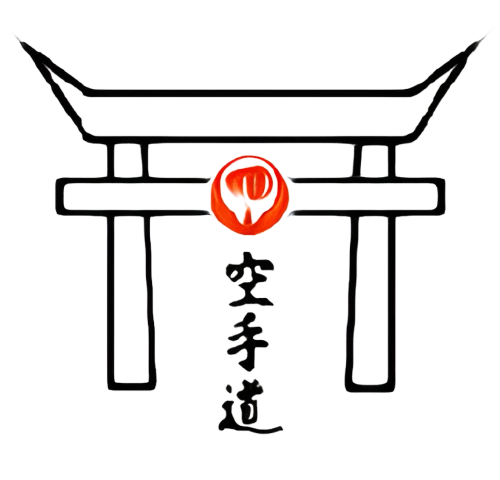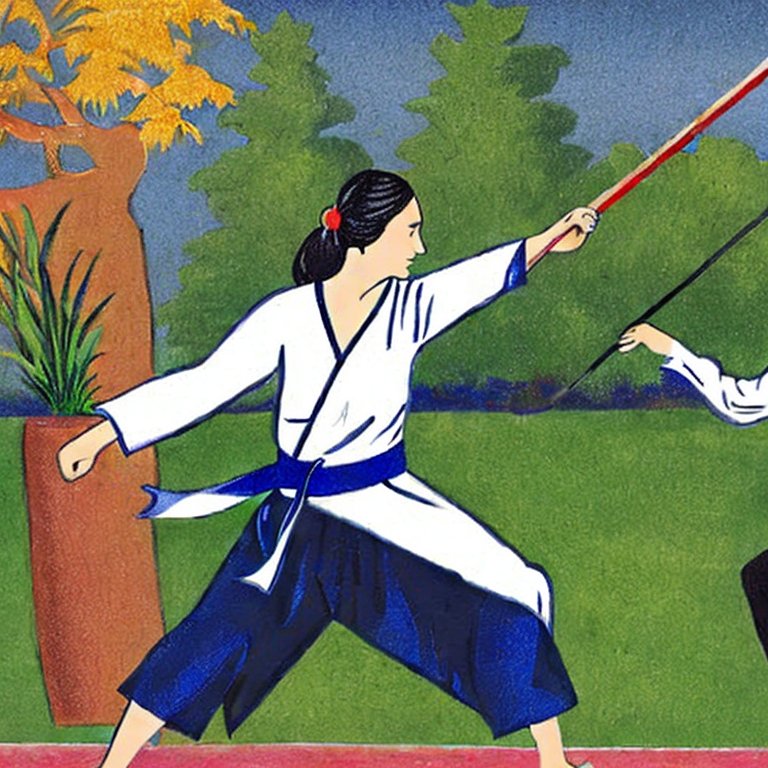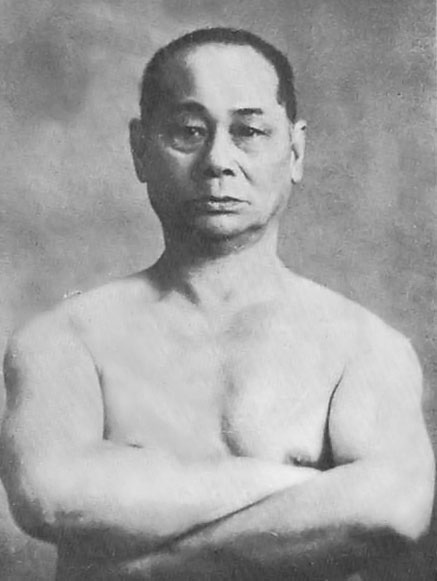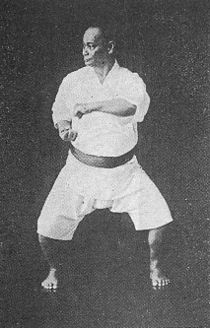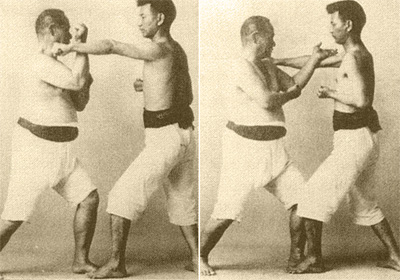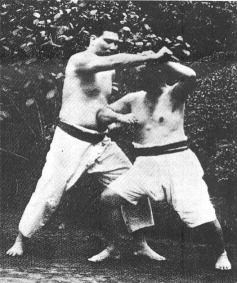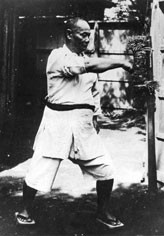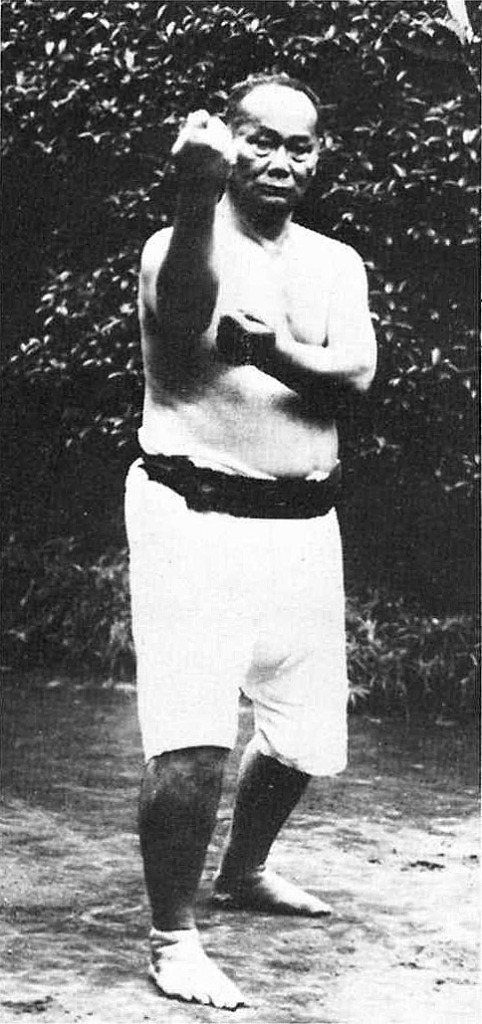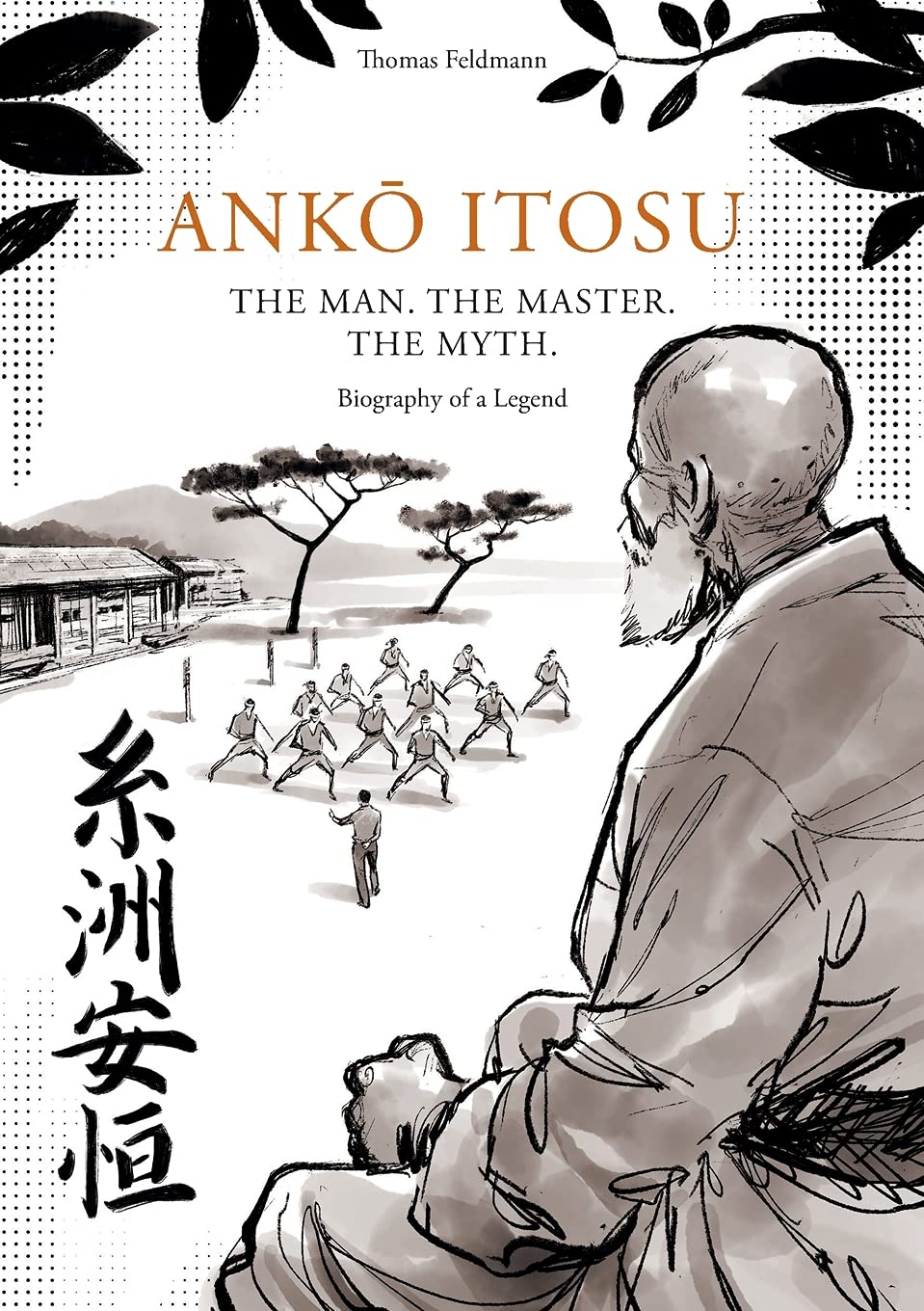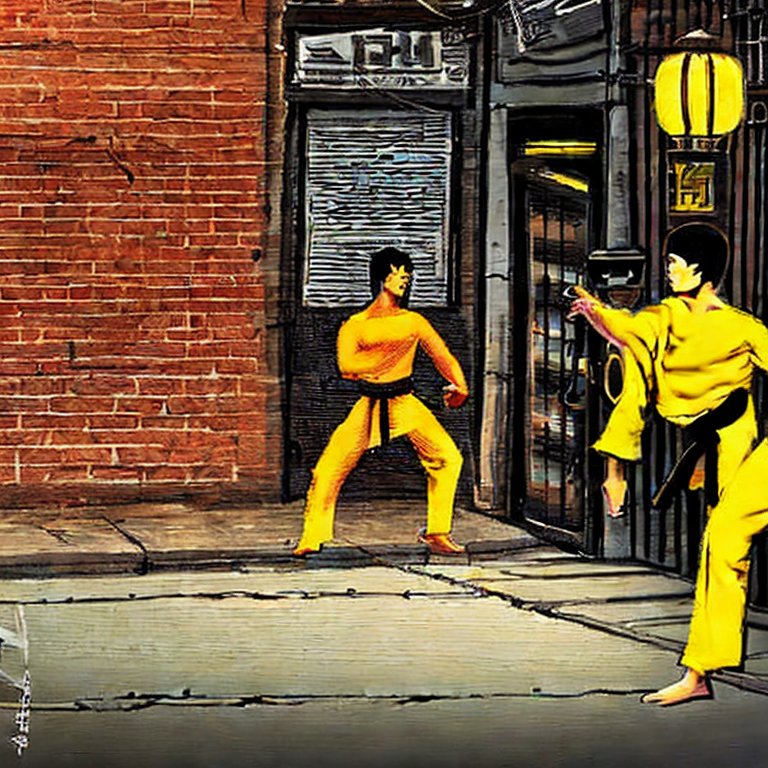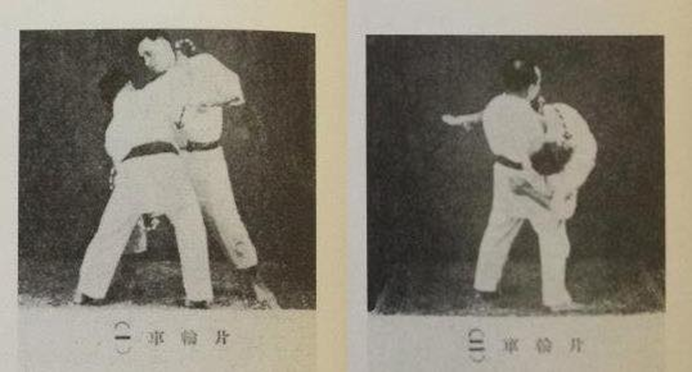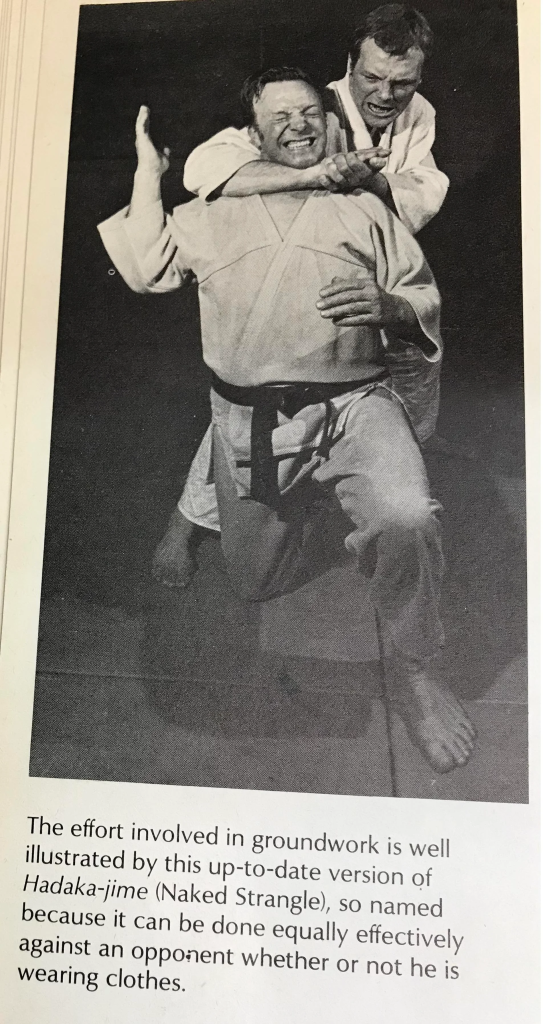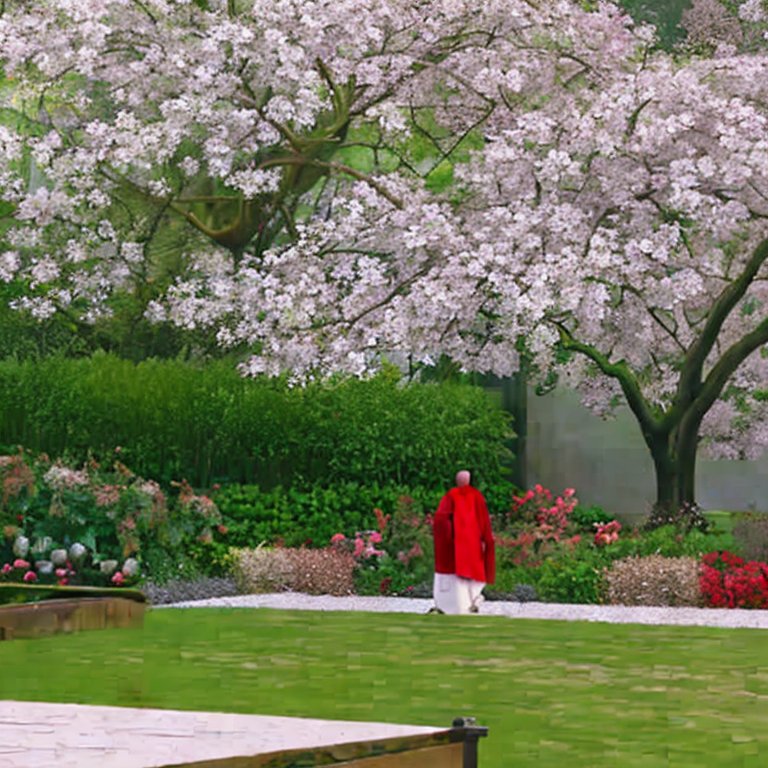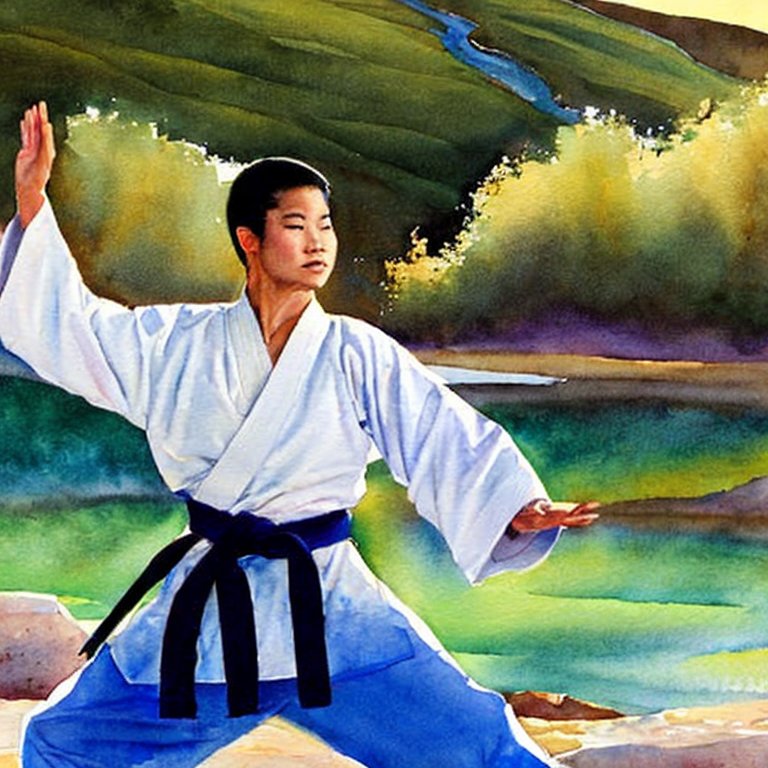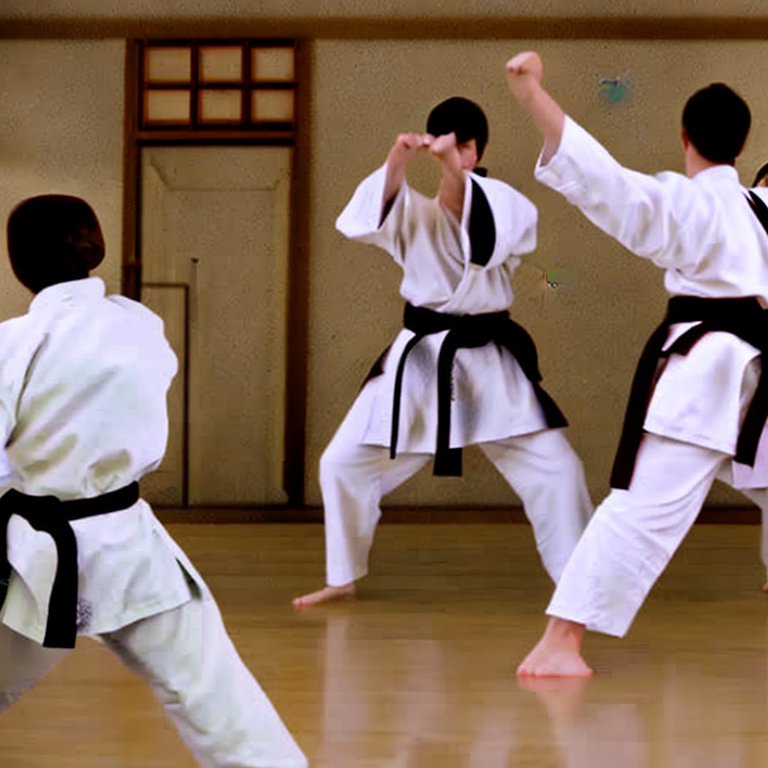Introduction
What is Karate?
Karate is a martial art originating from Japan that emphasizes strikes, kicks, and blocks. The word “Karate” means “empty hand”, which refers to the concept that the body is the only weapon a karateka needs. Karate is known for its many techniques and the emphasis on power and speed. It is practiced as a sport and for self-defense purposes. There are different styles of Karate, such as Shotokan, Goju-Ryu, Wado-Ryu, Kyokushin, and others. In addition to physical training, Karate also emphasizes mental discipline and character development.
What is Kobudo?
Kobudo is an ancient martial art originating from Okinawa, Japan, which focuses on fighting and defending with weapons. The word “Kobudo” means “old martial way” or “ancient martial art”. It involves the use of various traditional Okinawan weapons, including the bo staff, tonfa, sai, nunchaku, kama, and others. Kobudo techniques include weapon handling, positioning, and striking, as well as empty-hand techniques for disarming an opponent. Like Karate, Kobudo emphasizes physical fitness, mental discipline, and character development. Practicing Kobudo can improve coordination, concentration, and self-defense skills.
What are the differences between Karate and Kobudo?
The main difference between Karate and Kobudo is their focus on techniques. Karate emphasizes “empty hand” techniques, which means that the body is the only weapon needed for self-defense. On the other hand, Kobudo focuses on weapon techniques, using traditional Okinawan weapons like the bo staff, tonfa, sai, and others.
Another difference is that Karate is practiced as a sport and for self-defense purposes, while Kobudo is primarily focused on self-defense and preserving traditional martial arts techniques. Karate includes kata (a sequence of techniques) and kumite (sparring), while Kobudo includes kata and kobudo kumite (sparring with weapons).
Despite these differences, Karate and Kobudo can be practiced together as complementary martial arts, with some styles even combining the two. Both martial arts emphasize physical fitness, mental discipline, and character development, and can improve coordination, concentration, and self-defense skills.
History of Karate and Kobudo
Origin of Karate and Kobudo
Karate originated in Okinawa, Japan, in the early 20th century. It was developed from various martial arts styles that were brought to Okinawa from China and other parts of Asia. Over time, Okinawan masters developed and refined their own unique style of Karate. Karate was introduced to mainland Japan in the 1920s and became increasingly popular, eventually spreading to other parts of the world.
Kobudo also originated in Okinawa, Japan, and dates back to the Ryukyu Kingdom period (15th-19th centuries). Okinawa was a trade hub and was exposed to different cultures and martial arts styles. Kobudo developed as a way for Okinawans to defend themselves against invaders and pirates. It was also used by peasants to defend themselves against the ruling samurai class, who had banned them from carrying weapons. Over time, Kobudo techniques were passed down from generation to generation and became part of Okinawan culture.
Development of Karate and Kobudo over the years
Karate and Kobudo have both undergone significant development and evolution over the years.
In the case of Karate, the introduction of the martial art to mainland Japan in the 1920s led to the development of different styles and organizations, each with their own unique approaches to training and techniques. Shotokan, Goju-Ryu, Wado-Ryu, and Kyokushin are among the most well-known styles of Karate. Karate has also become popular worldwide and is now practiced in many countries around the world.
Kobudo, on the other hand, faced a decline in the 20th century due to the banning of weapons in Okinawa and the impact of World War II. However, Kobudo was revived in the 1950s and 1960s, thanks in part to the efforts of Okinawan masters who sought to preserve traditional martial arts techniques. Today, Kobudo is practiced by martial artists around the world and is recognized as an important part of Okinawan cultural heritage.
Both Karate and Kobudo have also evolved in terms of their approach to training and techniques. While the emphasis on physical fitness and self-defense remains central to both martial arts, there has been a greater focus on mental discipline, character development, and spiritual aspects of training. Many Karate and Kobudo practitioners also incorporate modern training methods and technologies into their practice to enhance their skills and performance.
Karate
Principles of Karate
Karate is based on several principles that guide its training and techniques. Here are some of the key principles of Karate:
1. Focus: Karate requires a high level of concentration and focus to execute techniques with precision and accuracy.
2. Power: Karate emphasizes the use of powerful strikes and movements to overcome opponents.
3. Speed: Karate techniques are often executed quickly and with great speed, allowing for effective defense and offense.
4. Control: Karate practitioners must maintain control over their techniques and movements, both for safety and to maintain precision and accuracy.
5. Balance: Karate techniques require a strong sense of balance and stability to be executed effectively.
6. Discipline: Karate emphasizes mental discipline, including self-control, respect for others, and dedication to training and practice.
7. Breathing: Proper breathing is essential in Karate, both for physical performance and to promote mental focus and relaxation.
8. Technique: Karate techniques are based on proper form and technique, which requires careful attention to detail and practice.
9. Spirit: Karate emphasizes the development of a strong spirit or mindset, which includes determination, perseverance, and a willingness to overcome challenges.
Overall, Karate is a martial art that emphasizes physical fitness, mental discipline, and character development, all of which are based on these guiding principles.
Karate Techniques
Karate is a martial art that involves a wide range of techniques, including strikes, kicks, and blocks. Here is an overview of these techniques, with their Japanese terminology and English translations:
Strikes (Tsuki)
– Seiken (Forefist) punch: A straight punch delivered with the forefist.
– Ura-ken (Backfist) strike: A hook punch delivered with the backfist.
– Age-ken (Rising fist) strike: An uppercut punch delivered with the forefist.
– Shuto (Knife hand) strike: A strike delivered with the edge of the hand, resembling a knife.
– Empi (Elbow) strike: A strike delivered with the elbow.
Kicks (Geri)
– Mae-geri (Front kick): A kick delivered straight forward with the ball of the foot.
– Yoko-geri kekomi (Side thrust kick): A kick delivered sideways with the heel of the foot.
– Mawashi-geri (Roundhouse kick): A kick delivered in a circular motion with the instep of the foot.
– Ushiro-geri (Back kick): A kick delivered backward with the heel of the foot.
Blocks (Uke)
– Jodan uke (High block): A block delivered to defend against high-level attacks.
– Chudan uke (Middle block): A block delivered to defend against mid-level attacks.
– Gedan uke (Low block): A block delivered to defend against low-level attacks.
– Juji-uke (X-block): A double-handed block used to defend against multiple attacks.
In addition to these basic techniques, Karate also incorporates more advanced techniques such as throws, joint locks, and pressure point strikes. These techniques are typically learned at higher levels of training and require a deeper understanding of the principles and concepts of Karate.
Overall, Karate techniques emphasize speed, power, precision, and control, and are used in various combinations to create effective self-defense strategies.Advanced techniques: Kata and Kumite
In addition to the basic techniques of strikes, kicks, and blocks, Karate also includes the practice of Kata. Kata are pre-arranged sequences of movements that simulate a fight against one or more imaginary opponents. They are typically performed solo, but can also be performed in pairs or groups when showcasing applications (Bunkai).
Kata serves several purposes in Karate training, including:
1. Developing technique: Kata allows practitioners to refine their techniques and movements through repetition and practice.
2. Improving fitness: Kata requires a high level of physical conditioning, including strength, flexibility, and endurance.
3. Enhancing focus: Practicing Kata requires a high level of concentration and mental focus, which can improve mental discipline and concentration.
4. Developing strategy: Kata allows practitioners to explore different self-defense scenarios and develop strategies for responding to different types of attacks.
There are many different Kata in Karate, each with its unique sequence of movements and techniques. Some of the most common Kata include:
– Pinan/Heian series:: A basic Kata series of 5 kata taught in many styles of Karate
– Bassai: A more advanced Kata that emphasizes power and technique.
– Naihanchi/Tekki Shodan: A Kata that emphasizes quick movements and close-range combat
– Kushanku/Kanku Dai: A Kata that emphasizes fluid, circular movements and the use of jumps and spins.
Kata is an important aspect of Karate training, as it allows practitioners to develop their technique, fitness, focus, and strategy in a structured and systematic way.
Karate Styles
Shotokan Karate
Founded by Gichin Funakoshi in the early 20th century, Shotokan Karate emphasizes powerful techniques, strong stances, and the use of kata (pre-arranged sequences of movements). Shotokan Karate is known for its emphasis on kihon (basic techniques) and kumite (sparring), and is one of the most widely practiced styles of Karate.
Goju-Ryu Karate
Developed by Chojun Miyagi in the early 20th century, Goju-Ryu Karate emphasizes a combination of hard and soft techniques and the use of breathing exercises. Goju-Ryu Karate includes many circular movements and incorporates techniques from Chinese martial arts.
Wado-Ryu Karate
Founded by Hironori Otsuka in the mid-20th century, Wado-Ryu Karate combines Karate with elements of Jujutsu and emphasizes body movements and fluidity. Wado-Ryu Karate is known for its emphasis on evasion and avoidance, and includes many techniques that involve using an opponent’s momentum against them.
Kyokushin Karate
Founded by Masutatsu Oyama in the mid-20th century, Kyokushin Karate emphasizes full-contact sparring and intense physical conditioning. Kyokushin Karate is known for its emphasis on toughness and endurance, and includes many techniques that involve powerful strikes to the body.
Other styles
There are many other styles of Karate, each with their unique techniques, training methods, and philosophies. Some other popular styles include Shito-Ryu, Shorin-Ryu, Isshin-Ryu, and Uechi-Ryu. Each style has its unique strengths and weaknesses and is suited to different types of practitioners.
Kobudo
Kobudo, which means “ancient martial art,” is a system of traditional Okinawan weapons that developed in parallel with Karate. The history of Kobudo is closely linked to the history of Okinawa, a small island in the Ryukyu Islands chain of Japan.
During the Ryukyu Kingdom period (14th-19th centuries), Okinawa was a hub for trade and cultural exchange between China, Japan, and other neighboring countries. As a result, Okinawa developed a unique martial arts culture that incorporated elements of Chinese and Japanese martial arts, as well as traditional Okinawan practices.
Kobudo is believed to have originated during this period, when Okinawan peasants were forbidden from carrying weapons by the ruling class. As a result, they developed a system of using everyday objects as weapons, such as farming tools and fishing implements. Over time, these objects were refined and developed into a system of weapons that included the bo (long staff), sai (trident), tonfa (handled club), kama (sickle), nunchaku (chain with two wooden handles), and others.
During the 20th century, Kobudo gained popularity as a complementary practice to Karate. Many Karate schools incorporated Kobudo into their training, and some practitioners specialized in Kobudo as a separate discipline. Today, Kobudo is practiced by martial artists around the world and is recognized as an important aspect of traditional Okinawan martial arts culture.
Overall, the history of Kobudo is closely tied to the history of Okinawa and reflects the island’s unique cultural heritage and martial arts traditions. Through the practice of Kobudo, practitioners can connect with this rich history and continue to preserve and pass on these ancient martial arts techniques for future generations.
Here are some of the most commonly used weapons in Kobudo:

Bo (long staff)
The bo is a long staff typically made from hardwood or bamboo, measuring around 6 feet in length. The bo is used for striking, blocking, and sweeping techniques, and requires a high level of skill and coordination to wield effectively.
Sai (trident)
The sai is a three-pronged metal weapon that originated in China and was later adopted by Okinawan Kobudo practitioners. The sai is used for stabbing, blocking, and trapping techniques, and requires a high level of precision and control to use effectively.
Tonfa (handled club)
The tonfa is a wooden club with a handle that originated in Okinawa and was later adopted by law enforcement agencies around the world. The tonfa is used for striking, blocking, and grappling techniques, and requires a high level of strength and coordination to wield effectively.
Kama (sickle)
The kama is a traditional farming tool that was adapted for use as a weapon in Kobudo. The kama is used for cutting, slashing, and hooking techniques, and requires a high level of precision and control to use effectively.
Nunchaku (chain with two wooden handles)
The nunchaku is a weapon consisting of two wooden handles connected by a chain or cord. The nunchaku is used for striking, blocking, and trapping techniques, and requires a high level of coordination and control to use effectively.
Other weapons used in Kobudo include the eku (boat oar), tinbe-rochin (shield and spear), tekko (knuckle dusters), and more. Each weapon has its unique characteristics and requires a different set of skills to use effectively. Through the practice of Kobudo, practitioners can develop a deep understanding of these weapons and their techniques, as well as a deep appreciation for the rich history and cultural heritage of Okinawan martial arts.
Kobudo includes a wide range of techniques and styles. Here are some of the most commonly practiced techniques and styles in Kobudo:
Techniques
– Striking: Kobudo practitioners use a variety of striking techniques with their weapons, including thrusts, cuts, and swings.
– Blocking: Kobudo includes a wide range of blocking techniques, which are used to deflect and neutralize attacks.
– Trapping: Kobudo practitioners use their weapons to trap and control an opponent’s weapon or body, creating opportunities for counterattacks.
– Grappling: Some Kobudo techniques involve grappling and joint locking, which can be used to immobilize an opponent or disarm them.
– Footwork: Kobudo practitioners use footwork to position themselves for attack and defense, as well as to evade an opponent’s attacks.
Styles
– Ryukyu Kobudo: This style of Kobudo is based on the traditional weapons of Okinawa, including the bo, sai, tonfa, kama, and others. Ryukyu Kobudo emphasizes the use of natural movements and principles to create effective techniques.
– Matayoshi Kobudo: Developed by Shinpo Matayoshi in the mid-20th century, Matayoshi Kobudo incorporates weapons from Okinawa as well as weapons from other parts of Asia, such as the Chinese jian (straight sword) and the Philippine escrima (stick fighting). Matayoshi Kobudo emphasizes the development of technique and the use of traditional weapons in self-defense situations.
– Yamanni-Ryu Kobudo: This style of Kobudo focuses on the use of the bo and is known for its fluid, circular movements and powerful strikes. Yamanni-Ryu Kobudo also includes techniques for empty-hand combat, as well as for fighting against multiple opponents.
– Kukishin Ryu Bojutsu: Developed by Takamatsu Toshitsugu in the early 20th century, Kukishin Ryu Bojutsu is a Japanese martial art that emphasizes the use of the bo. This style includes a wide range of techniques and principles, as well as techniques for fighting against multiple opponents and for using the bo in different environments.
Overall, Kobudo includes a wide range of techniques and styles, each with its unique characteristics and strengths. Through the practice of Kobudo, practitioners can develop a deep understanding of traditional Okinawan martial arts and continue to preserve and pass on these ancient techniques for future generations.
In addition to being a martial art, Kobudo also offers a range of benefits for physical and mental health. Here are some of the ways that practicing Kobudo can improve health:
Physical Benefits
– Strength and conditioning: Kobudo requires a high level of physical strength and endurance, which can help to build muscle and improve overall fitness.
– Coordination and balance: The practice of Kobudo requires precise movements and coordination, which can improve balance and body control.
– Flexibility: Many Kobudo techniques require a high level of flexibility, which can improve joint mobility and reduce the risk of injury.
– Cardiovascular health: The high-intensity training involved in Kobudo can improve cardiovascular health and endurance.
Mental Benefits
– Focus and concentration: Kobudo requires a high level of mental focus and concentration, which can improve cognitive function and mental discipline.
– Stress relief: The practice of martial arts can help to reduce stress and anxiety by providing a physical outlet for tension and emotions.
– Self-confidence: As practitioners become more proficient in Kobudo, they may develop greater self-confidence and self-esteem.
– Discipline and self-control: The practice of Kobudo requires discipline and self-control, which can help practitioners to develop greater mental strength and resilience.
Overall, the practice of Kobudo offers a range of physical and mental benefits that can improve overall health and well-being. Through the practice of Kobudo, practitioners can develop greater strength, flexibility, focus, and discipline, as well as a deeper appreciation for traditional Okinawan martial arts culture.
Conclusion
Karate and Kobudo are two distinct martial arts with a shared history and many similarities, as well as some key differences. Here are some of the main similarities and differences between Karate and Kobudo:
Similarities
– Both Karate and Kobudo originated in Okinawa, Japan, and are based on traditional Okinawan martial arts techniques.
– Both Karate and Kobudo emphasize discipline, respect, and mental focus as important aspects of training.
– Both Karate and Kobudo use natural body movements and principles to create effective techniques.
– Both Karate and Kobudo require a high level of physical strength, endurance, and coordination to perform effectively.
– Both Karate and Kobudo are practiced as a way of preserving and passing on traditional Okinawan martial arts culture.
Differences
– Karate is primarily an empty-hand martial art, while Kobudo focuses on the use of traditional Okinawan weapons such as the bo, sai, and tonfa.
– Karate emphasizes striking, kicking, and blocking techniques, while Kobudo emphasizes weapons-based techniques such as thrusting, cutting, and trapping.
– Karate typically involves more high-intensity training and sparring, while Kobudo focuses more on kata (pre-arranged sequences of movements) and weapons drills.
– Karate is generally more widely practiced and recognized than Kobudo, which is a more specialized and less well-known martial art.
Overall, while Karate and Kobudo share many similarities, they are two distinct martial arts with their unique techniques, training methods, and philosophies. Through the practice of these traditional Okinawan martial arts, practitioners can connect with a rich cultural heritage and develop physical and mental strength and discipline.
There are many reasons why people choose to practice Karate and Kobudo. Here are some of the most common reasons:
Self-defense
One of the primary reasons people choose to practice Karate and Kobudo is for self-defense purposes. By learning effective martial arts techniques, practitioners can develop the skills and confidence needed to protect themselves and their loved ones in a dangerous situation.
Physical fitness
Karate and Kobudo are high-intensity martial arts that require a high level of physical fitness and conditioning. Through regular practice, practitioners can develop strength, flexibility, endurance, and coordination, improving overall physical health.
Mental discipline
Karate and Kobudo require a high level of mental focus, discipline, and control. Through the practice of these martial arts, practitioners can develop greater mental discipline and resilience, which can translate to other areas of their lives.
Cultural heritage
Karate and Kobudo have a rich history and cultural heritage that dates back hundreds of years. For many practitioners, the practice of these martial arts is a way of connecting with this heritage and preserving traditional techniques and philosophies.
Personal growth
The practice of Karate and Kobudo can also be a path for personal growth and self-improvement. By setting and achieving goals, overcoming challenges, and developing discipline and self-control, practitioners can become more confident, resilient, and successful in all areas of their lives.
Overall, the practice of Karate and Kobudo offers a range of physical, mental, and cultural benefits. Whether for self-defense, physical fitness, mental discipline, personal growth, or simply for the love of the art, Karate and Kobudo provide a rewarding and fulfilling path for practitioners of all ages and abilities.
FAQs
Q: Is Karate just a fighting sport?
A: While Karate does involve fighting techniques, it is also a traditional martial art that emphasizes discipline, respect, and mental focus. Karate training can improve physical fitness, mental discipline, and self-confidence, in addition to self-defense skills.
Q: Can I practice Karate and Kobudo together?
A: Yes, it is possible to practice both Karate and Kobudo together. Many martial arts schools offer training in both arts, or practitioners may choose to study each art separately.
Q: Is Kobudo harder than Karate?
A: Both Karate and Kobudo require a high level of physical strength, endurance, and coordination to perform effectively. While Kobudo may involve additional challenges, such as learning to use weapons effectively, the difficulty level of each art is highly individual and depends on the practitioner’s skill level, training, and physical abilities.
Q: Do I need to be physically strong to practice Karate or Kobudo?
A: While physical strength can be an asset in Karate and Kobudo, it is not a requirement for practicing these martial arts. With consistent practice and training, practitioners of all ages and abilities can develop the physical and mental strength needed to excel in Karate and Kobudo.
Q: How can I get started with Karate or Kobudo?
A: The best way to get started with Karate or Kobudo is to find a qualified instructor or martial arts school in your area. Look for a school with experienced instructors who prioritize safety, discipline, and respect in their training. Many schools offer introductory classes or trial periods to help beginners get started.
